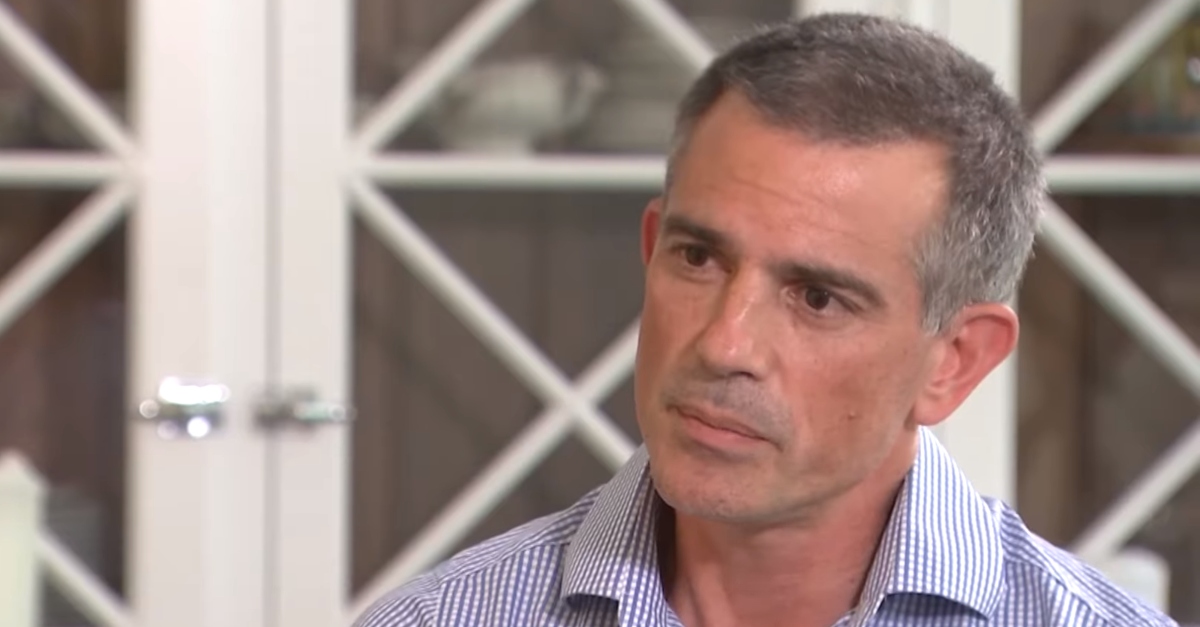
Prosecutors in the criminal case against Connecticut man Fotis Dulos want a gag order, but the defendant’s attorney wants the state to focus on stopping law enforcement from giving information to reporters. Dulos has been charged with tampering with evidence and hindering prosecution in the disappearance of his wife, Jennifer Dulos, with whom he was engaged in a bitter divorce. Jennifer Dulos has not been seen since May 24th.
State’s Attorney Richard Colangeo Jr. filed a motion Wednesday demanding an “order preventing the parties from making statements to the media or in public settings that post a substantial likelihood of material prejudice to the case,” according to The Stamford Advocate. He wants a stop to attorneys from making statements “that the lawyer knows or should know will be disseminated by means of public communication and will have a substantial likelihood of materially prejudicing an adjudicative proceeding in the matter.” That language tracks the verbiage of Connecticut’s professional conduct rule on pretrial publicity.
Dulos attorney Norm Pattis had his own demand in response to that.
“The state’s efforts would be better spent policing its own investigators,” Pattis said. “It is not too much to suggest that law enforcement should be asked to conduct an internal investigation of who among its members perpetually leaks information to reporters.”
To be sure, the Dulos case has grabbed plenty of attention, and both investigators and the defense team seem pretty comfortable talking to reporters. The defendant and his girlfriend Michelle Troconis is charged amid the May 24 disappearance of his estrange wife Jennifer Dulos, with whom he was having a pretty tense divorce. Investigators say they covered up evidence the missing woman was the victim of a violent crime.
Law enforcement sources have revealed some key pieces of information to reporters on background: for example, that a t-shirt stained with Jennifer Dulos’ blood was found in a garbage bin; that a Fotis Dulos employee possibly drove that defendant’s black Ford Raptor the day of the disappearance (this individual is not suspected of wrongdoing); and that Troconis was meeting with police. While some of the facts of the case have been gleaned by reporters from documents, such as affidavits, filed publicly in court, Pattis alleges that some also came through leaks from the police.
Pattis told the court Wednesday there’s widespread public speculation that his client placed a role in Jennifer Dulos’s “disappearance and/or death.” The lawyer later added that his client, husband Fotis Dulos, “is entitled, as a matter of law, to rebut claims and insinuations that he is in any way responsible for her disappearance.”
For his part, Pattis has spoken publicly about the case frequently. He even argued that Jennifer Dulos may have caused her own disappearance, so the defense reviewing what he called a “revenge suicide” or “gone girl” hypothesis.
In Connecticut, an attorney’s ability to speak outside court about a matter he or she is litigating is governed by Rule 3.6 of the Connecticut Practice Book. The Rule’s general prohibition on pre-trial out-of-court statements is similar to the ABA Model Rules of Professional Conduct. Connecticut Rule 3.6(b), however, clearly allows a lawyer to fight back against “prejudicial . . . publicity not initiated by the lawyer or the lawyer’s client.” The Rule clarifies that such a statement “shall be limited to such information as is necessary to mitigate the recent adverse publicity.”
Attorney Aaron Keller, who the host of the Law&Crime Network’s The Daily Debrief, notes that here, ethically, attorney Pattis is likely in the clear: his statements to the press have been designed to push back against pretrial publicity initiated by other parties (the police, the press, etc.).
But prosecutors are also under a duty under Connecticut Rule 3.8 to “exercise reasonable care to prevent investigators, law enforcement personnel, employees or other persons assisting or associated with the prosecutor . . . from making an extrajudicial statement that the prosecutor would be prohibited from making” under Rule 3.6.
Keller notes that the degree to which prosecutors actually do police their own police pursuant to Rule 3.8 is hard to ascertain in practice. But the prosecutor has a general duty to prevent prejudicial leaks from wrecking a defendant’s shot at a fair trial. He also points out that a judge has drastically greater leeway to govern an individual proceeding than an ethics panel, so a judge concerned about this particular case might be more apt to listen to the complaints by both the prosecutor and the defense and might therefore be inclined to honor them with a gag order imposed on the parties.
Whether such a gag order would accomplish much, however, is questionable. Noted constitutional law scholar Erwin Chemerinsky has written that gag orders “are motivated by the laudable goal of trying to ensure a fair trial.” However, Chemerinsky “believe[s] that such court orders are virtually always unconstitutional” given the First Amendment implications of banning speech.
“[E]ven if publicity is detrimental to a fair trial, there is the assumption that statements by lawyers and parties cause or exacerbate the harm,” Chemerinsky writes. “[G]ag orders on the attorneys and parties do not decrease media coverage but merely limit the sources of information . . . [i]ndeed, if such gag orders have an effect, it likely is counterproductive to the goal of fair judicial proceedings. Gag orders on trial participants cause the media to rely on less accurate sources of information.”
Gag orders against the press are a different matter; they are almost universally unconstitutional under Nebraska Press Ass’n v. Stuart.
[Screengrab via NBC New York.]
Have a tip we should know? [email protected]